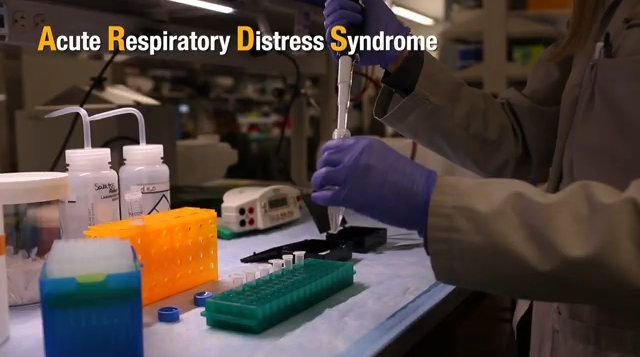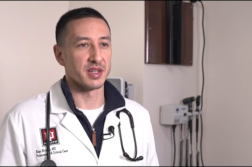SALT LAKE CITY, Utah (Ivanhoe Newswire) – A groundbreaking study will soon be underway that researchers say will transform the way doctors treat patients battling life-threatening conditions. It could save hundreds of thousands of lives every year. A.R.D.S.
Despite decades of research and clinical trials, there hasn’t been much progress in finding effective treatments for pneumonia, sepsis, and acute respiratory distress syndrome – or A.R.D.S.
“A.R.D.S. kills as many as 30 or 40 percent of the people it strikes,” explains Samuel Brown, MD, the V.P. for Research at Intermountain Health.
The go-to treatment is antibiotics, but even then, only 50 percent of patients recover – researchers say that’s because these kinds of illnesses affect each patient differently. Dr. Brown compares the current treatment for A.R.D.S. to a fruit basket.
“You’ve got apples and oranges, bananas, papayas, guavas, mangos in the fruit basket and you say, ‘Well, this thing, I think this will work for apples, so let’s do it for the whole basket.’ But phenotyping is saying, ‘Oh no, let’s identify the individual fruits.’,” Dr. Brown explains.
That’s why researchers are spending the next few years collecting extensive data on thousands of patients with the goal of uncovering all the different forms of A.R.D.S. Studying patients’ genetics and biological traits will give researchers a blueprint for these life-threatening conditions, allowing them to tailor treatments to each patient and giving them a better shot at recovery.
Researchers from 22 different hospitals across the country will begin enrolling patients next year.
Contributors to this news report include: Jessica Sanchez, Producer; Kirk Manson, Videographer; Roque Correa, Editor.
To receive a free weekly e-mail on medical breakthroughs from Ivanhoe, sign up at: http://www.ivanhoe.com/ftk
MEDICAL BREAKTHROUGHS
RESEARCH SUMMARY
TOPIC: UNRAVELING THE MYSTERIES OF A.R.D.S
REPORT: MB #5282
BACKGROUND: A.R.D.S. stands for acute respiratory distress syndrome. This condition happens when the lungs are severely injured due to trauma or infection. About 190,000 are diagnosed with A.R.D.S. in the United States. It can affect anyone at any age, but some people at higher risk are smokers, binge drinkers, people with chronic lung disease, and people who’ve had high risk surgery. A.R.D.S. can be caused by sepsis, pneumonia, trauma to the head, chest or other areas of the body, pancreatitis, and/or near drowning.
(Sources: https://www.lung.org/lung-health-diseases/lung-disease-lookup/ards/learn-about-ards
DIAGNOSING: Some telltale signs of A.R.D.S. include, but aren’t limited to: severe shortness of breath, unusually rapid breathing, low blood pressure, and/or confusion and extreme fatigue. Doctors can diagnose A.R.D.S. with imaging tests like chest X-rays or a CT scan. They can also diagnose the condition with lab tests or heart tests like an electrocardiogram or an echocardiogram.
(Sources: https://www.mayoclinic.org/diseases-conditions/ards/symptoms-causes/syc-20355576
NEW TECHNOLOGY: Currently, there are no new treatments or therapies available for A.R.D.S. yet, but researchers are in the process of coming up with one. Right now, researchers are studying patients’ genetic makeup to allow them to tailor their treatments specifically for each patient. It’s going to take a few years before the next treatment will be available.
(Source: Samuel Brown, MD, V.P. of Research at Intermountain Health)
FOR MORE INFORMATION ON THIS REPORT, PLEASE CONTACT:
Erin Goff Jess Gomez
Erin.goff@imail.org jess.gomez@imail.org
If this story or any other Ivanhoe story has impacted your life or prompted you or someone you know to seek or change treatments, please let us know by contacting Marjorie Bekaert Thomas at mthomas@ivanhoe.com





